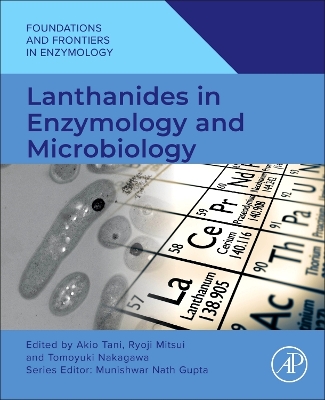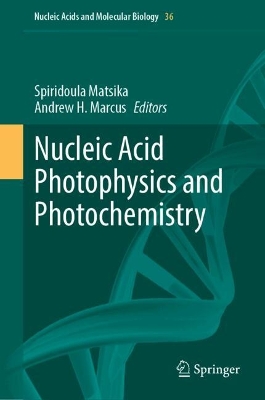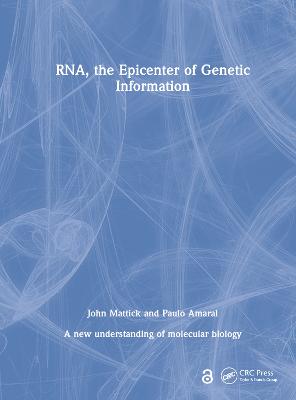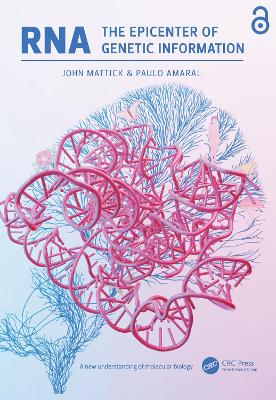Laccase and Polyphenol Oxidase
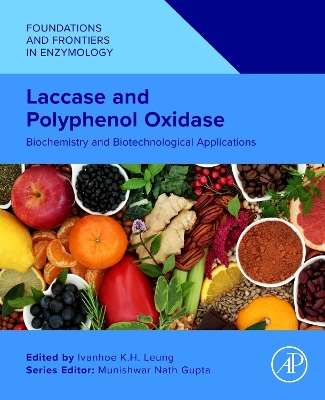 portes grátis
portes grátis
Laccase and Polyphenol Oxidase
Biochemistry and Biotechnological Applications
Leung, Ivanhoe K.H.
Elsevier Science Publishing Co Inc
12/2024
304
Mole
Inglês
9780443133015
Pré-lançamento - envio 15 a 20 dias após a sua edição
Descrição não disponível.
Contributors
About the editor
Preface
CHAPTER 1 Functional roles of polyphenol oxidases in plants and fungi
Mehdi Kamali Dashtarzhaneh, Valentina Valencia Bernal and Fatemeh Khodadadi
Introduction
Polyphenol oxidase structure and mechanism
Enzymatic activity and reaction mechanisms of polyphenol oxidases
Latency and activation of polyphenol oxidases
Polyphenol oxidase and browning
Polyphenol oxidase functions against biotic stress in plants
Polyphenol oxidase function against plant pathogens
Polyphenol oxidase function against insect pests
Functions of polyphenol oxidases in plants against abiotic stress
Biological functions of polyphenol oxidases in plant metabolism synthesis
Betalain biosynthesis
Aurone biosynthesis
Tyrosine and esculetin metabolism
Lignan biosynthesis
Functions of polyphenol oxidases in fungi
Pigmentation and browning
Lignin degradation
Morphogenesis
Fungal defense and interaction
Polyphenol oxidase genes and characterization
Conclusions
References
CHAPTER 2 Plant PPO: Production, purification, and activity assays
Zhao Li, Kritika Shrestha and Yu Li
Introduction
Overall PPO structure
Structural information on the substrate specificity
Previous investigations on plant PPO purification and characterization
Crude extraction and purification of PPOs
Characterization of plant PPOs
Recombinant plant PPOs: Production, purification and characterization
Prior investigations into recombinant PPOs
Case study: Recombinant production, purification and characterization of grape PPO
Conclusions
References
CHAPTER 3 Laccase and polyphenol oxidase: Biochemistry and biotechnological applications
J. Ashwini John, Sana Riaz, S.K. Taihid Ali and Ethiraj Selvarajan
Introduction
Structure and catalytic site
Mechanism of enzyme action
Biochemical applications of polyphenol oxidase and laccase
Biosensing/biochemical sensing
Removal of pollutants
Other biotechnological applications
Food industry
Textile industry
Pharmaceutical industry
Bioremediation
Conclusions and future prospectives
References
CHAPTER 4 Recent advances in the design of PPO inhibitors
Chen Wai Wong, Zhi Zhou Siew, Win Yee Lim and Eric Wei Chiang Chan
Introduction
Polyphenol oxidase inhibitors in food packaging systems
The role of food packaging on enzymatic browning
Active packaging as an innovative approach to inhibit enzymatic browning
Choice between plant-based and synthetic PPO inhibitors in active packaging
Compatibility of plant-based inhibitors with active packaging
Polyphenol oxidase inhibitors in cosmeceuticals
Role of tyrosinase in melanogenesis
Melanogenesis-related dermatological issues
Plant-based cosmeceutical PPO inhibitors
Delivery systems for plant-based PPO inhibitors
Ethical screening methods for melanogenesis inhibition
Conclusion
References
Further reading
CHAPTER 5 Reaction mechanism and redox potential of laccase
Nabangshu Dev Sharma
Introduction - laccase as versatile biocatalysts
Basic structural features of laccases
Multidomain structure of laccase
Active site characteristics
Conserved sequential regions
Reaction mechanism of laccases and their unique substrate binding cavity
Substrate oxidation
Distinction between laccases and other MCOs
Oxygen reduction mechanism
Redox potential of laccases
Role of the axial ligand
Other impacting factors
Relation between redox potential and substrate specificity
Laccase engineering and the role of redox mediators
Factors influencing laccase activity other than redox potential
Conclusion
References
CHAPTER 6 Laccases: Biological functions and potential applications
Lan Huong Le Viet, Tomoko Matsuda and Ivanhoe K.H. Leung
Introduction
Enzyme structure and reaction
Laccase occurrence and characteristics
Plant laccases
Fungal laccases
Bacterial laccases
Insect laccases
Biological functions of laccases
Synthesis and degradation of lignin
Pigment formation and polyphenol oxidation
Pathogen defence
Biological functions of insect laccase
Biotechnological and industrial application of laccases
Biodegradation and bioremediation
Pulp and paper industry
Biosensors nanobiotechnology
Biofuels
Application in the food industry
Cosmetic and pharmaceutical manufacturing
Conclusions
References
CHAPTER 7 Challenges and applications of laccase inbioremediation
Ohinerau Bonnet, Tumanako Fa'aui, Ivanhoe K.H. Leung, Shan Yi and Wei-Qin Zhuang
Introduction
Laccase structures and active sites
Laccases redox potential and substrate range
Benefits and drawbacks of current laccase degradation systems
Free laccase systems
Laccase-mediator systems
Immobilized laccase systems
Fungal versus bacterial laccases for biotechnological applications
Laccase-assisted bioremediation strategies
Dye decolorization of textile effluents
Detoxification of pulp and paper mill effluents
Pesticides
Endocrine-disrupting chemicals
Pharmaceuticals
Polycyclic aromatic hydrocarbons
Challenges associated with the laccase-assisted bioremediation of emerging contaminants and future perspectives
Concluding remarks
AI disclosure
References
CHAPTER 8 Immobilization of Laccase for industrial wastewater treatment: Current challenges and future perspectives
Komla Alokpa, Vinoth Kumar Vaidyanathan and Hubert Cabana
Introduction
Laccase-catalyzed oxidation of substrates
Laccase mediator system
Cross-coupling and polymerization of substrates
Immobilization of laccase
Adsorption
Entrapment/encapsulation
Cross-linking
Covalent immobilization
Multi-enzyme immobilization
Combination of laccase-catalyzed oxidation and photocatalysis
Factors influencing laccase immobilization
Reactor configurations for laccase-based treatment of wastewater
Costs and competitiveness of laccase-based treatment of wastewater
(Eco)toxicity of immobilization carrier materials
Challenges and future outlook
Conclusion
References
CHAPTER 9 In silico bioprospecting and engineering laccases: Methods and applications
Ruite Xiang, Martin Floor, Lars H. Ostergaard, Kirk M. Schnorr and Victor Guallar
Introduction
Molecular determinants of reactivity in laccases
Characterization of laccase activity. The computational protocol
In silico laccase engineering, putting the protocol to work
On demand bioprospecting with our computational protocol
Keep an eye on AI
Property design, not everything is about high catalytic rates
Conclusion
Acknowledgments
References
Index
About the editor
Preface
CHAPTER 1 Functional roles of polyphenol oxidases in plants and fungi
Mehdi Kamali Dashtarzhaneh, Valentina Valencia Bernal and Fatemeh Khodadadi
Introduction
Polyphenol oxidase structure and mechanism
Enzymatic activity and reaction mechanisms of polyphenol oxidases
Latency and activation of polyphenol oxidases
Polyphenol oxidase and browning
Polyphenol oxidase functions against biotic stress in plants
Polyphenol oxidase function against plant pathogens
Polyphenol oxidase function against insect pests
Functions of polyphenol oxidases in plants against abiotic stress
Biological functions of polyphenol oxidases in plant metabolism synthesis
Betalain biosynthesis
Aurone biosynthesis
Tyrosine and esculetin metabolism
Lignan biosynthesis
Functions of polyphenol oxidases in fungi
Pigmentation and browning
Lignin degradation
Morphogenesis
Fungal defense and interaction
Polyphenol oxidase genes and characterization
Conclusions
References
CHAPTER 2 Plant PPO: Production, purification, and activity assays
Zhao Li, Kritika Shrestha and Yu Li
Introduction
Overall PPO structure
Structural information on the substrate specificity
Previous investigations on plant PPO purification and characterization
Crude extraction and purification of PPOs
Characterization of plant PPOs
Recombinant plant PPOs: Production, purification and characterization
Prior investigations into recombinant PPOs
Case study: Recombinant production, purification and characterization of grape PPO
Conclusions
References
CHAPTER 3 Laccase and polyphenol oxidase: Biochemistry and biotechnological applications
J. Ashwini John, Sana Riaz, S.K. Taihid Ali and Ethiraj Selvarajan
Introduction
Structure and catalytic site
Mechanism of enzyme action
Biochemical applications of polyphenol oxidase and laccase
Biosensing/biochemical sensing
Removal of pollutants
Other biotechnological applications
Food industry
Textile industry
Pharmaceutical industry
Bioremediation
Conclusions and future prospectives
References
CHAPTER 4 Recent advances in the design of PPO inhibitors
Chen Wai Wong, Zhi Zhou Siew, Win Yee Lim and Eric Wei Chiang Chan
Introduction
Polyphenol oxidase inhibitors in food packaging systems
The role of food packaging on enzymatic browning
Active packaging as an innovative approach to inhibit enzymatic browning
Choice between plant-based and synthetic PPO inhibitors in active packaging
Compatibility of plant-based inhibitors with active packaging
Polyphenol oxidase inhibitors in cosmeceuticals
Role of tyrosinase in melanogenesis
Melanogenesis-related dermatological issues
Plant-based cosmeceutical PPO inhibitors
Delivery systems for plant-based PPO inhibitors
Ethical screening methods for melanogenesis inhibition
Conclusion
References
Further reading
CHAPTER 5 Reaction mechanism and redox potential of laccase
Nabangshu Dev Sharma
Introduction - laccase as versatile biocatalysts
Basic structural features of laccases
Multidomain structure of laccase
Active site characteristics
Conserved sequential regions
Reaction mechanism of laccases and their unique substrate binding cavity
Substrate oxidation
Distinction between laccases and other MCOs
Oxygen reduction mechanism
Redox potential of laccases
Role of the axial ligand
Other impacting factors
Relation between redox potential and substrate specificity
Laccase engineering and the role of redox mediators
Factors influencing laccase activity other than redox potential
Conclusion
References
CHAPTER 6 Laccases: Biological functions and potential applications
Lan Huong Le Viet, Tomoko Matsuda and Ivanhoe K.H. Leung
Introduction
Enzyme structure and reaction
Laccase occurrence and characteristics
Plant laccases
Fungal laccases
Bacterial laccases
Insect laccases
Biological functions of laccases
Synthesis and degradation of lignin
Pigment formation and polyphenol oxidation
Pathogen defence
Biological functions of insect laccase
Biotechnological and industrial application of laccases
Biodegradation and bioremediation
Pulp and paper industry
Biosensors nanobiotechnology
Biofuels
Application in the food industry
Cosmetic and pharmaceutical manufacturing
Conclusions
References
CHAPTER 7 Challenges and applications of laccase inbioremediation
Ohinerau Bonnet, Tumanako Fa'aui, Ivanhoe K.H. Leung, Shan Yi and Wei-Qin Zhuang
Introduction
Laccase structures and active sites
Laccases redox potential and substrate range
Benefits and drawbacks of current laccase degradation systems
Free laccase systems
Laccase-mediator systems
Immobilized laccase systems
Fungal versus bacterial laccases for biotechnological applications
Laccase-assisted bioremediation strategies
Dye decolorization of textile effluents
Detoxification of pulp and paper mill effluents
Pesticides
Endocrine-disrupting chemicals
Pharmaceuticals
Polycyclic aromatic hydrocarbons
Challenges associated with the laccase-assisted bioremediation of emerging contaminants and future perspectives
Concluding remarks
AI disclosure
References
CHAPTER 8 Immobilization of Laccase for industrial wastewater treatment: Current challenges and future perspectives
Komla Alokpa, Vinoth Kumar Vaidyanathan and Hubert Cabana
Introduction
Laccase-catalyzed oxidation of substrates
Laccase mediator system
Cross-coupling and polymerization of substrates
Immobilization of laccase
Adsorption
Entrapment/encapsulation
Cross-linking
Covalent immobilization
Multi-enzyme immobilization
Combination of laccase-catalyzed oxidation and photocatalysis
Factors influencing laccase immobilization
Reactor configurations for laccase-based treatment of wastewater
Costs and competitiveness of laccase-based treatment of wastewater
(Eco)toxicity of immobilization carrier materials
Challenges and future outlook
Conclusion
References
CHAPTER 9 In silico bioprospecting and engineering laccases: Methods and applications
Ruite Xiang, Martin Floor, Lars H. Ostergaard, Kirk M. Schnorr and Victor Guallar
Introduction
Molecular determinants of reactivity in laccases
Characterization of laccase activity. The computational protocol
In silico laccase engineering, putting the protocol to work
On demand bioprospecting with our computational protocol
Keep an eye on AI
Property design, not everything is about high catalytic rates
Conclusion
Acknowledgments
References
Index
Este título pertence ao(s) assunto(s) indicados(s). Para ver outros títulos clique no assunto desejado.
Laccase; oxidase; enzyme; enzymes; enzymology; laccase biology; laccase production; laccase purification; laccase bioremediation; laccase inhibitors; oxidate biology; oxidase production; oxidase purification; oxidase and green chemistry
Contributors
About the editor
Preface
CHAPTER 1 Functional roles of polyphenol oxidases in plants and fungi
Mehdi Kamali Dashtarzhaneh, Valentina Valencia Bernal and Fatemeh Khodadadi
Introduction
Polyphenol oxidase structure and mechanism
Enzymatic activity and reaction mechanisms of polyphenol oxidases
Latency and activation of polyphenol oxidases
Polyphenol oxidase and browning
Polyphenol oxidase functions against biotic stress in plants
Polyphenol oxidase function against plant pathogens
Polyphenol oxidase function against insect pests
Functions of polyphenol oxidases in plants against abiotic stress
Biological functions of polyphenol oxidases in plant metabolism synthesis
Betalain biosynthesis
Aurone biosynthesis
Tyrosine and esculetin metabolism
Lignan biosynthesis
Functions of polyphenol oxidases in fungi
Pigmentation and browning
Lignin degradation
Morphogenesis
Fungal defense and interaction
Polyphenol oxidase genes and characterization
Conclusions
References
CHAPTER 2 Plant PPO: Production, purification, and activity assays
Zhao Li, Kritika Shrestha and Yu Li
Introduction
Overall PPO structure
Structural information on the substrate specificity
Previous investigations on plant PPO purification and characterization
Crude extraction and purification of PPOs
Characterization of plant PPOs
Recombinant plant PPOs: Production, purification and characterization
Prior investigations into recombinant PPOs
Case study: Recombinant production, purification and characterization of grape PPO
Conclusions
References
CHAPTER 3 Laccase and polyphenol oxidase: Biochemistry and biotechnological applications
J. Ashwini John, Sana Riaz, S.K. Taihid Ali and Ethiraj Selvarajan
Introduction
Structure and catalytic site
Mechanism of enzyme action
Biochemical applications of polyphenol oxidase and laccase
Biosensing/biochemical sensing
Removal of pollutants
Other biotechnological applications
Food industry
Textile industry
Pharmaceutical industry
Bioremediation
Conclusions and future prospectives
References
CHAPTER 4 Recent advances in the design of PPO inhibitors
Chen Wai Wong, Zhi Zhou Siew, Win Yee Lim and Eric Wei Chiang Chan
Introduction
Polyphenol oxidase inhibitors in food packaging systems
The role of food packaging on enzymatic browning
Active packaging as an innovative approach to inhibit enzymatic browning
Choice between plant-based and synthetic PPO inhibitors in active packaging
Compatibility of plant-based inhibitors with active packaging
Polyphenol oxidase inhibitors in cosmeceuticals
Role of tyrosinase in melanogenesis
Melanogenesis-related dermatological issues
Plant-based cosmeceutical PPO inhibitors
Delivery systems for plant-based PPO inhibitors
Ethical screening methods for melanogenesis inhibition
Conclusion
References
Further reading
CHAPTER 5 Reaction mechanism and redox potential of laccase
Nabangshu Dev Sharma
Introduction - laccase as versatile biocatalysts
Basic structural features of laccases
Multidomain structure of laccase
Active site characteristics
Conserved sequential regions
Reaction mechanism of laccases and their unique substrate binding cavity
Substrate oxidation
Distinction between laccases and other MCOs
Oxygen reduction mechanism
Redox potential of laccases
Role of the axial ligand
Other impacting factors
Relation between redox potential and substrate specificity
Laccase engineering and the role of redox mediators
Factors influencing laccase activity other than redox potential
Conclusion
References
CHAPTER 6 Laccases: Biological functions and potential applications
Lan Huong Le Viet, Tomoko Matsuda and Ivanhoe K.H. Leung
Introduction
Enzyme structure and reaction
Laccase occurrence and characteristics
Plant laccases
Fungal laccases
Bacterial laccases
Insect laccases
Biological functions of laccases
Synthesis and degradation of lignin
Pigment formation and polyphenol oxidation
Pathogen defence
Biological functions of insect laccase
Biotechnological and industrial application of laccases
Biodegradation and bioremediation
Pulp and paper industry
Biosensors nanobiotechnology
Biofuels
Application in the food industry
Cosmetic and pharmaceutical manufacturing
Conclusions
References
CHAPTER 7 Challenges and applications of laccase inbioremediation
Ohinerau Bonnet, Tumanako Fa'aui, Ivanhoe K.H. Leung, Shan Yi and Wei-Qin Zhuang
Introduction
Laccase structures and active sites
Laccases redox potential and substrate range
Benefits and drawbacks of current laccase degradation systems
Free laccase systems
Laccase-mediator systems
Immobilized laccase systems
Fungal versus bacterial laccases for biotechnological applications
Laccase-assisted bioremediation strategies
Dye decolorization of textile effluents
Detoxification of pulp and paper mill effluents
Pesticides
Endocrine-disrupting chemicals
Pharmaceuticals
Polycyclic aromatic hydrocarbons
Challenges associated with the laccase-assisted bioremediation of emerging contaminants and future perspectives
Concluding remarks
AI disclosure
References
CHAPTER 8 Immobilization of Laccase for industrial wastewater treatment: Current challenges and future perspectives
Komla Alokpa, Vinoth Kumar Vaidyanathan and Hubert Cabana
Introduction
Laccase-catalyzed oxidation of substrates
Laccase mediator system
Cross-coupling and polymerization of substrates
Immobilization of laccase
Adsorption
Entrapment/encapsulation
Cross-linking
Covalent immobilization
Multi-enzyme immobilization
Combination of laccase-catalyzed oxidation and photocatalysis
Factors influencing laccase immobilization
Reactor configurations for laccase-based treatment of wastewater
Costs and competitiveness of laccase-based treatment of wastewater
(Eco)toxicity of immobilization carrier materials
Challenges and future outlook
Conclusion
References
CHAPTER 9 In silico bioprospecting and engineering laccases: Methods and applications
Ruite Xiang, Martin Floor, Lars H. Ostergaard, Kirk M. Schnorr and Victor Guallar
Introduction
Molecular determinants of reactivity in laccases
Characterization of laccase activity. The computational protocol
In silico laccase engineering, putting the protocol to work
On demand bioprospecting with our computational protocol
Keep an eye on AI
Property design, not everything is about high catalytic rates
Conclusion
Acknowledgments
References
Index
About the editor
Preface
CHAPTER 1 Functional roles of polyphenol oxidases in plants and fungi
Mehdi Kamali Dashtarzhaneh, Valentina Valencia Bernal and Fatemeh Khodadadi
Introduction
Polyphenol oxidase structure and mechanism
Enzymatic activity and reaction mechanisms of polyphenol oxidases
Latency and activation of polyphenol oxidases
Polyphenol oxidase and browning
Polyphenol oxidase functions against biotic stress in plants
Polyphenol oxidase function against plant pathogens
Polyphenol oxidase function against insect pests
Functions of polyphenol oxidases in plants against abiotic stress
Biological functions of polyphenol oxidases in plant metabolism synthesis
Betalain biosynthesis
Aurone biosynthesis
Tyrosine and esculetin metabolism
Lignan biosynthesis
Functions of polyphenol oxidases in fungi
Pigmentation and browning
Lignin degradation
Morphogenesis
Fungal defense and interaction
Polyphenol oxidase genes and characterization
Conclusions
References
CHAPTER 2 Plant PPO: Production, purification, and activity assays
Zhao Li, Kritika Shrestha and Yu Li
Introduction
Overall PPO structure
Structural information on the substrate specificity
Previous investigations on plant PPO purification and characterization
Crude extraction and purification of PPOs
Characterization of plant PPOs
Recombinant plant PPOs: Production, purification and characterization
Prior investigations into recombinant PPOs
Case study: Recombinant production, purification and characterization of grape PPO
Conclusions
References
CHAPTER 3 Laccase and polyphenol oxidase: Biochemistry and biotechnological applications
J. Ashwini John, Sana Riaz, S.K. Taihid Ali and Ethiraj Selvarajan
Introduction
Structure and catalytic site
Mechanism of enzyme action
Biochemical applications of polyphenol oxidase and laccase
Biosensing/biochemical sensing
Removal of pollutants
Other biotechnological applications
Food industry
Textile industry
Pharmaceutical industry
Bioremediation
Conclusions and future prospectives
References
CHAPTER 4 Recent advances in the design of PPO inhibitors
Chen Wai Wong, Zhi Zhou Siew, Win Yee Lim and Eric Wei Chiang Chan
Introduction
Polyphenol oxidase inhibitors in food packaging systems
The role of food packaging on enzymatic browning
Active packaging as an innovative approach to inhibit enzymatic browning
Choice between plant-based and synthetic PPO inhibitors in active packaging
Compatibility of plant-based inhibitors with active packaging
Polyphenol oxidase inhibitors in cosmeceuticals
Role of tyrosinase in melanogenesis
Melanogenesis-related dermatological issues
Plant-based cosmeceutical PPO inhibitors
Delivery systems for plant-based PPO inhibitors
Ethical screening methods for melanogenesis inhibition
Conclusion
References
Further reading
CHAPTER 5 Reaction mechanism and redox potential of laccase
Nabangshu Dev Sharma
Introduction - laccase as versatile biocatalysts
Basic structural features of laccases
Multidomain structure of laccase
Active site characteristics
Conserved sequential regions
Reaction mechanism of laccases and their unique substrate binding cavity
Substrate oxidation
Distinction between laccases and other MCOs
Oxygen reduction mechanism
Redox potential of laccases
Role of the axial ligand
Other impacting factors
Relation between redox potential and substrate specificity
Laccase engineering and the role of redox mediators
Factors influencing laccase activity other than redox potential
Conclusion
References
CHAPTER 6 Laccases: Biological functions and potential applications
Lan Huong Le Viet, Tomoko Matsuda and Ivanhoe K.H. Leung
Introduction
Enzyme structure and reaction
Laccase occurrence and characteristics
Plant laccases
Fungal laccases
Bacterial laccases
Insect laccases
Biological functions of laccases
Synthesis and degradation of lignin
Pigment formation and polyphenol oxidation
Pathogen defence
Biological functions of insect laccase
Biotechnological and industrial application of laccases
Biodegradation and bioremediation
Pulp and paper industry
Biosensors nanobiotechnology
Biofuels
Application in the food industry
Cosmetic and pharmaceutical manufacturing
Conclusions
References
CHAPTER 7 Challenges and applications of laccase inbioremediation
Ohinerau Bonnet, Tumanako Fa'aui, Ivanhoe K.H. Leung, Shan Yi and Wei-Qin Zhuang
Introduction
Laccase structures and active sites
Laccases redox potential and substrate range
Benefits and drawbacks of current laccase degradation systems
Free laccase systems
Laccase-mediator systems
Immobilized laccase systems
Fungal versus bacterial laccases for biotechnological applications
Laccase-assisted bioremediation strategies
Dye decolorization of textile effluents
Detoxification of pulp and paper mill effluents
Pesticides
Endocrine-disrupting chemicals
Pharmaceuticals
Polycyclic aromatic hydrocarbons
Challenges associated with the laccase-assisted bioremediation of emerging contaminants and future perspectives
Concluding remarks
AI disclosure
References
CHAPTER 8 Immobilization of Laccase for industrial wastewater treatment: Current challenges and future perspectives
Komla Alokpa, Vinoth Kumar Vaidyanathan and Hubert Cabana
Introduction
Laccase-catalyzed oxidation of substrates
Laccase mediator system
Cross-coupling and polymerization of substrates
Immobilization of laccase
Adsorption
Entrapment/encapsulation
Cross-linking
Covalent immobilization
Multi-enzyme immobilization
Combination of laccase-catalyzed oxidation and photocatalysis
Factors influencing laccase immobilization
Reactor configurations for laccase-based treatment of wastewater
Costs and competitiveness of laccase-based treatment of wastewater
(Eco)toxicity of immobilization carrier materials
Challenges and future outlook
Conclusion
References
CHAPTER 9 In silico bioprospecting and engineering laccases: Methods and applications
Ruite Xiang, Martin Floor, Lars H. Ostergaard, Kirk M. Schnorr and Victor Guallar
Introduction
Molecular determinants of reactivity in laccases
Characterization of laccase activity. The computational protocol
In silico laccase engineering, putting the protocol to work
On demand bioprospecting with our computational protocol
Keep an eye on AI
Property design, not everything is about high catalytic rates
Conclusion
Acknowledgments
References
Index
Este título pertence ao(s) assunto(s) indicados(s). Para ver outros títulos clique no assunto desejado.

